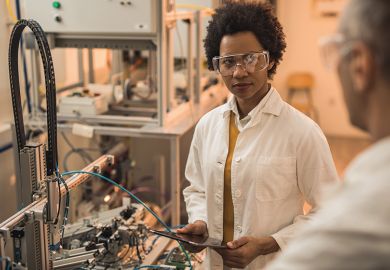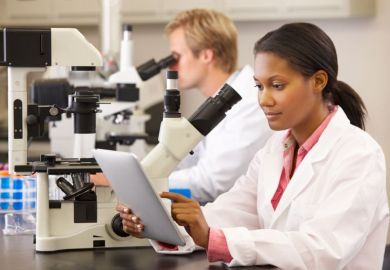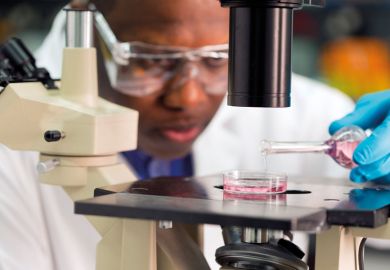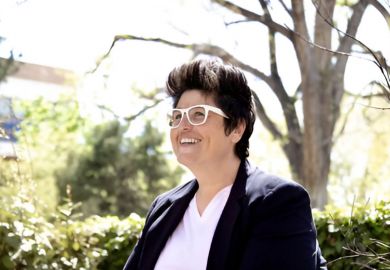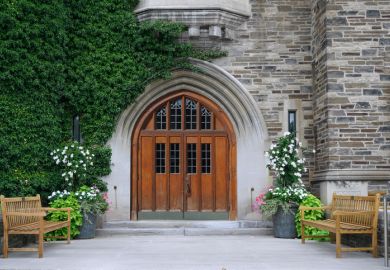Those pursuing a holy grail of academia – graduating many more low-income and minority students in the sciences – have beaten a path to the door of Freeman Hrabowski.
“Everybody wants to understand our model,” said Dr Hrabowski, president of the University of Maryland, Baltimore County, with little, if any, exaggeration.
The reason for the interest is straightforward: a degree keeps becoming more and more essential for a well-paying job, demand for those in scientific fields is growing fastest, minority students face the greatest overall need, and 14,000-student UMBC is the nation’s top public producer of black graduates who later earn a doctorate in a scientific field.
The question, however, is whether UMBC and Dr Hrabowski – a fast-growing suburban campus just north of Washington and its intensely loyal leader for the past 26 years – are replicable.
There are certainly good reasons to doubt it. One is Dr Hrabowski’s larger-than-life personality. He cannot get across campus without multiple stops to pull aside students he knows personally, such as the Haitian immigrant who reported “definitely” making progress in his computer science courses since they last talked.
The second obstacle, which is even bigger, may be money. One of Dr Hrabowski’s signature achievements is the Meyerhoff Scholars Program. Aimed initially at black male students, it was established in 1988 by philanthropist Robert Meyerhoff to provide a select cohort of science majors with intensive academic, social and financial support to get them through to graduation. It’s but one example of Dr Hrabowski’s formidable track record in attracting private support to compensate for the limits of public funding.
Some of Dr Hrabowski’s other methods may be more susceptible to copying, with a concerted effort. A key underlying principle, Dr Hrabowski and his staff explained, is to aggressively and thoroughly study what works in education, what does not, and to constantly incorporate the resulting lessons.
One of Dr Hrabowski’s prized implementers is Diana Hamilton, a lecturer in chemistry and biochemistry. During a recent visit by Dr Hrabowski, she stood back and served as an on-demand guide and troubleshooter for what is in essence a science class without a teacher. In it, students sit in groups of four around a small electronic whiteboard, where they work out chemistry problems. The goal of the group format is both to help the students with their classwork, and to teach them the collaborative skills that they will need to repeat the process on their own in subsequent years.
Another key piece of the puzzle is Yvette Mozie-Ross, UMBC’s vice provost for enrolment management. Dr Mozie-Ross relies on a computer system that gives her real-time updates on which UMBC students and classes are struggling. Where problems arise, she directs immediate action – student tutoring, teacher training, curriculum redesign, whatever else – to get them fixed.
“Most institutions have a data warehouse. What most institutions don’t have is an analytics tool to use that data on a daily basis, to make informed decisions,” Dr Mozie-Ross said.
Dr Hrabowski’s tenure at UMBC hasn’t been completely without hiccups. He faced a campus protest earlier this semester that turned into a direct confrontation with some students after at least two sexual assault victims accused campus and county police of mishandling their cases.
He also got pushback during the Meyerhoff scheme’s early years over its exclusive emphasis on black students, mostly men. But he long ago rebounded from that, and now makes the point that solutions he and UMBC have devised to help black students actually work for all students.
“The words I use are ‘inclusive excellence’,” Dr Hrabowski said. “Yes, we are helping kids of colour, but we are helping all kids.”
One major test of UMBC’s replicability should be reaching a conclusion soon. The private Howard Hughes Medical Institute made a five-year investment of $8 million (£6.3 million) back in 2014, to try adapting the Meyerhoff programme at Pennsylvania State University and at the University of North Carolina at Chapel Hill. And there is interest from many other institutions.
UMBC’s success has its downside, however. Near the end of a campus stroll, Dr Hrabowski happened upon Kate Brown, a professor of history who has been winning plaudits for her groundbreaking work in discovering and documenting the true human toll of the Chernobyl nuclear disaster.
Because of it, she is soon to be another member of the UMBC diaspora – Professor Brown has accepted an offer from the Massachusetts Institute of Technology that will lead to an endowed professorship.
Dr Hrabowski, who often turns down offers to move elsewhere, revelled in her accomplishment. “It’s a nice story,” he said with a broad smile. “We’re very proud of her.”
POSTSCRIPT:
Print headline: Is Maryland’s success with minorities replicable?
Register to continue
Why register?
- Registration is free and only takes a moment
- Once registered, you can read 3 articles a month
- Sign up for our newsletter
Subscribe
Or subscribe for unlimited access to:
- Unlimited access to news, views, insights & reviews
- Digital editions
- Digital access to THE’s university and college rankings analysis
Already registered or a current subscriber?

